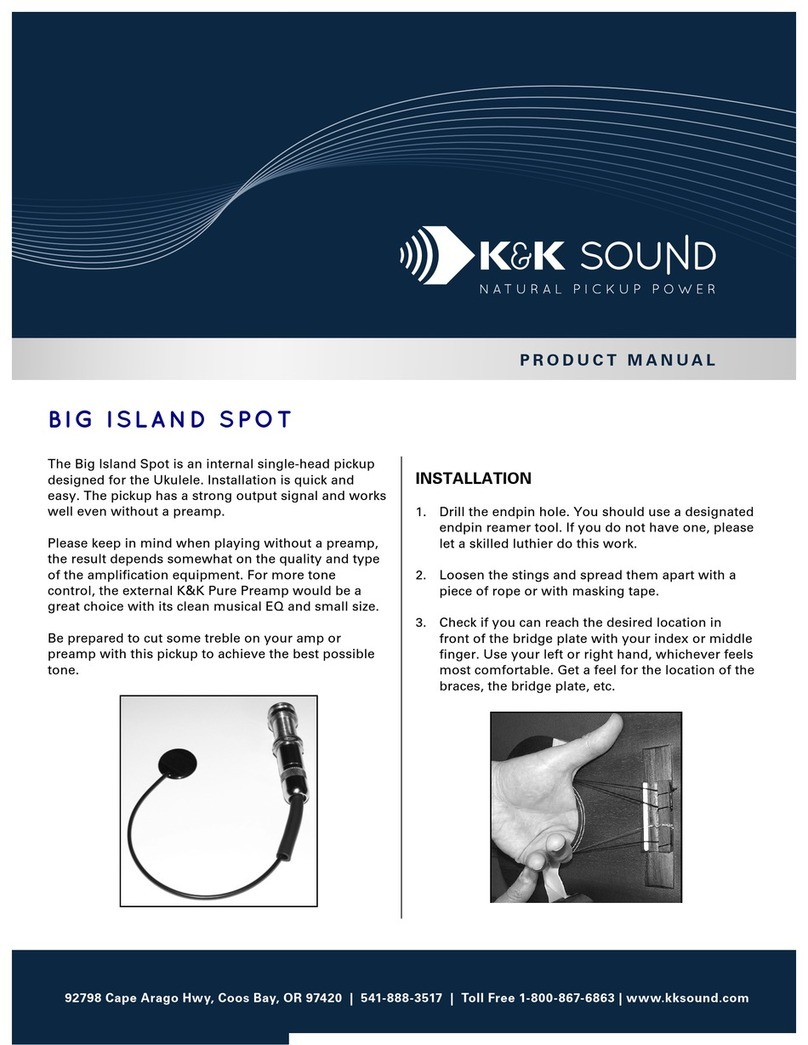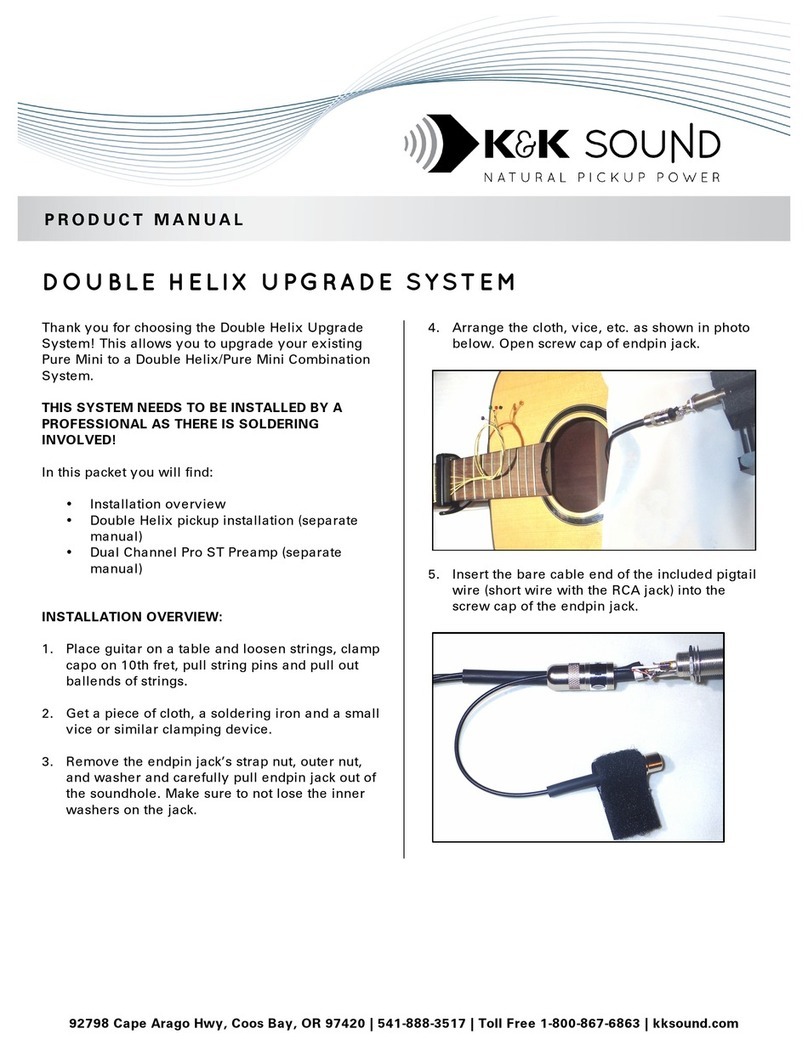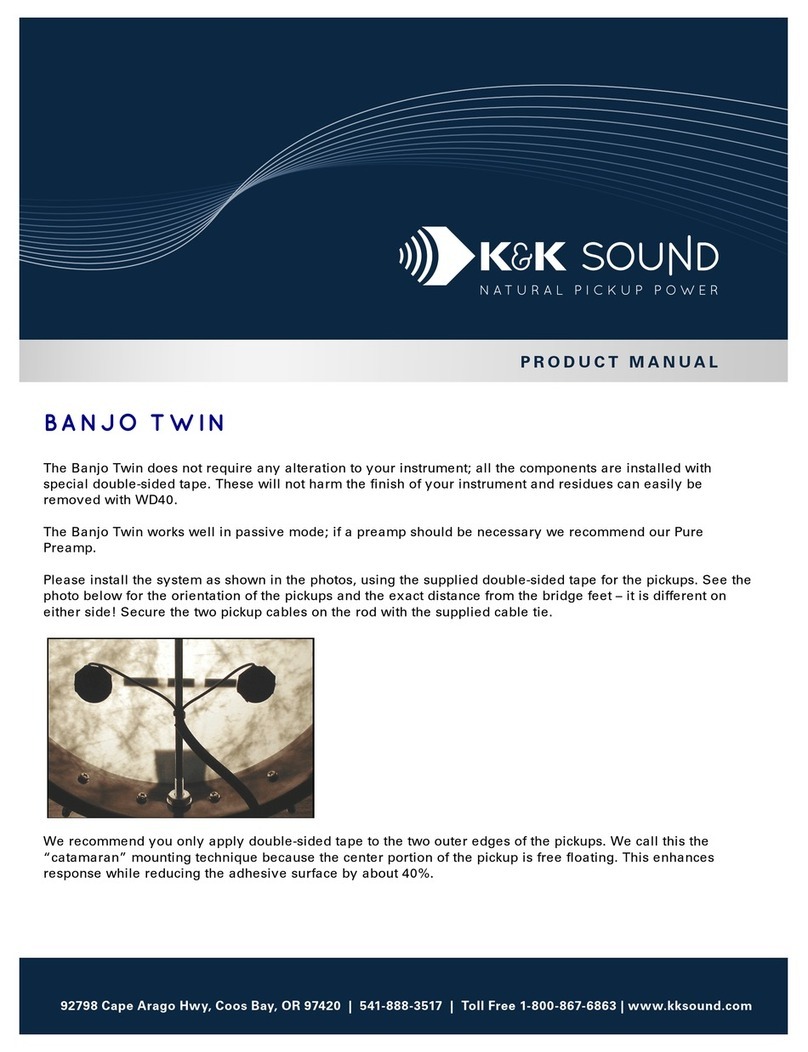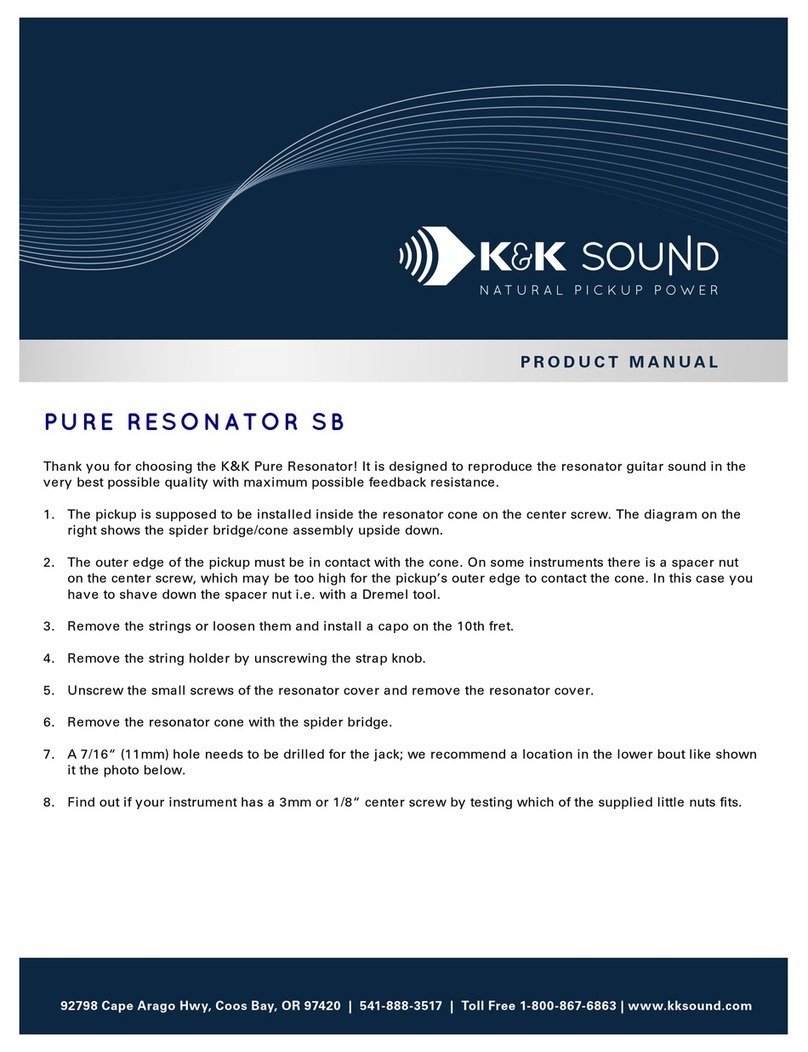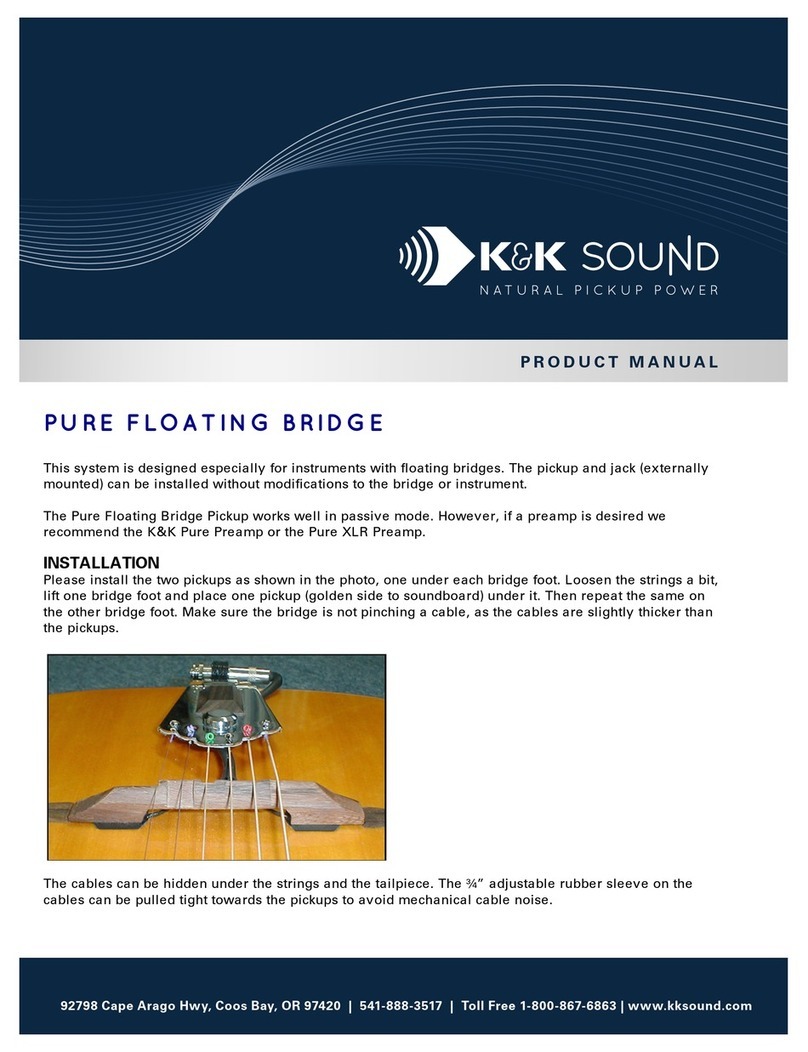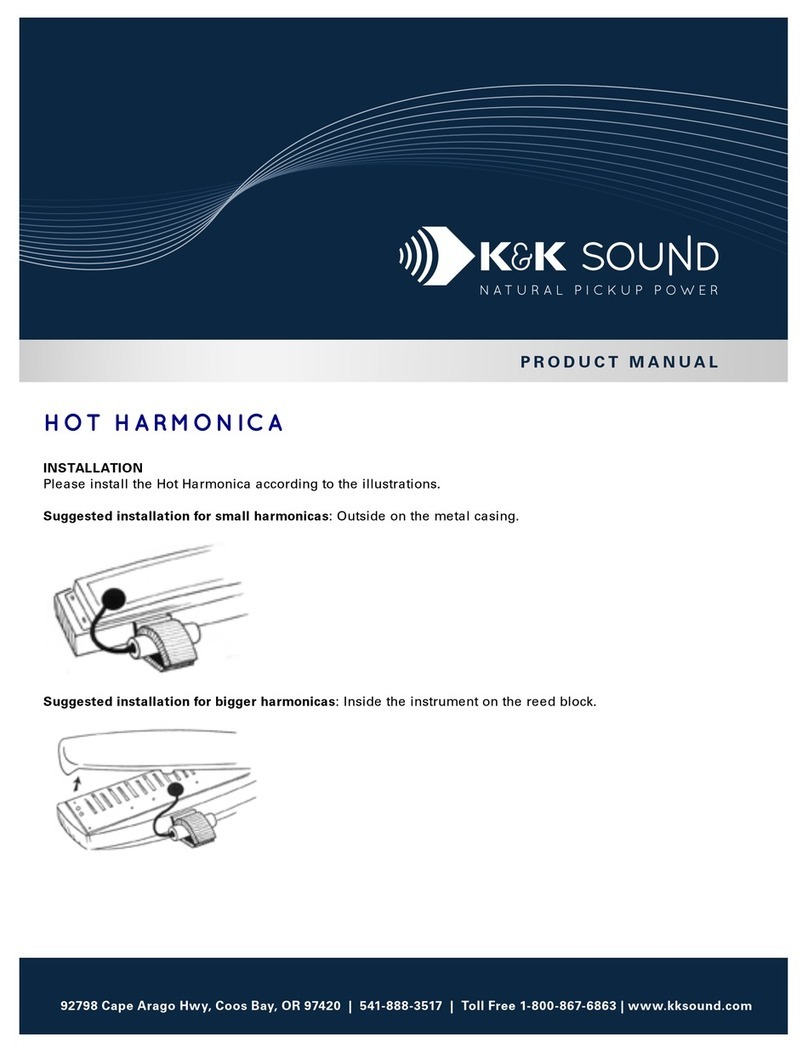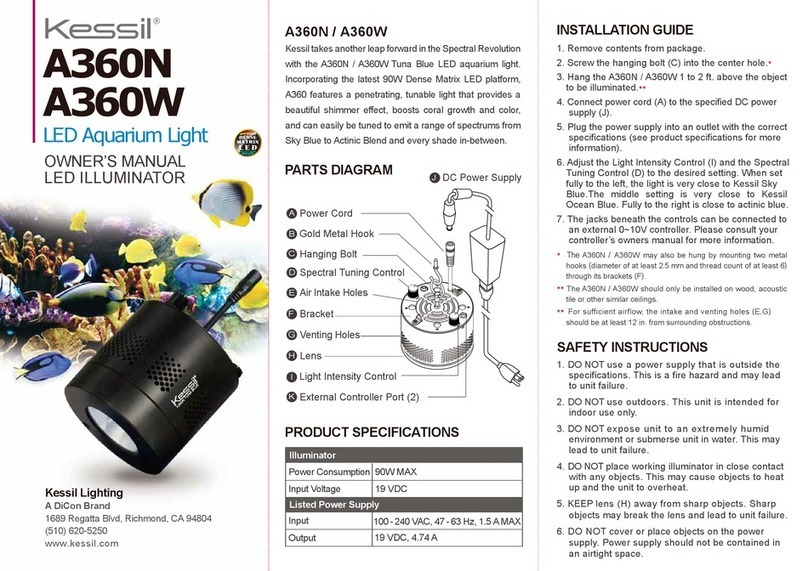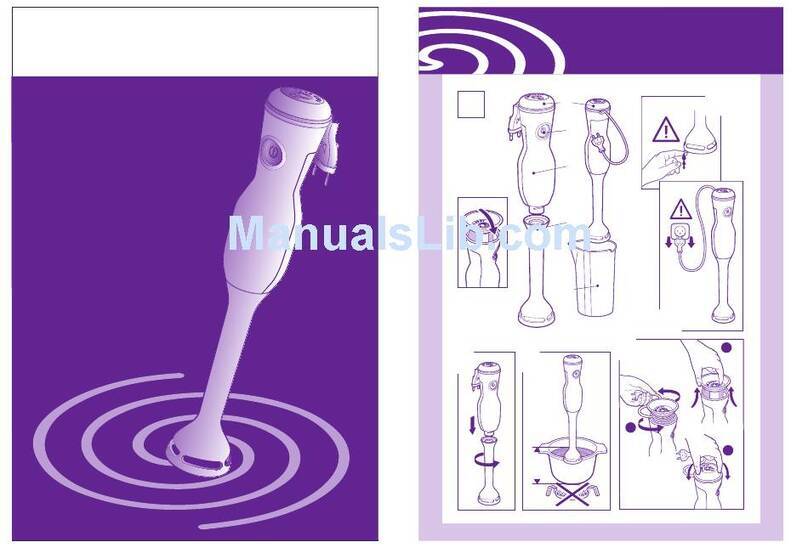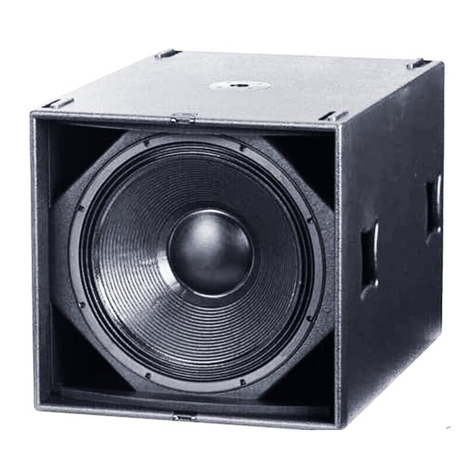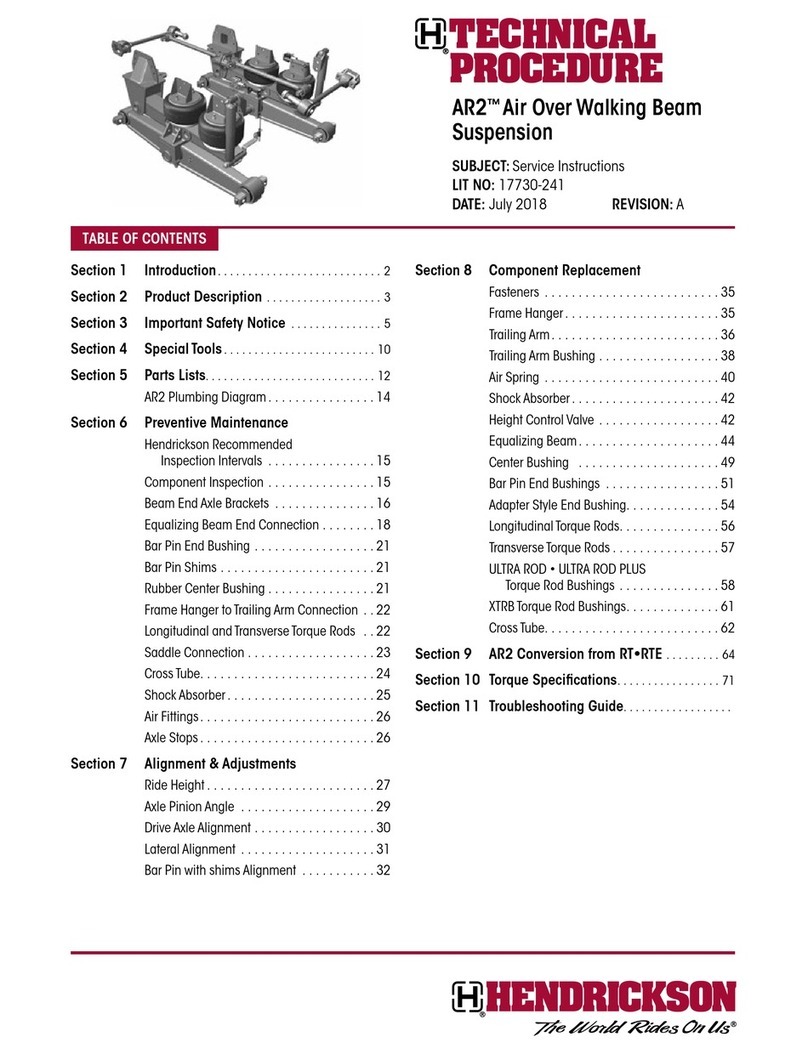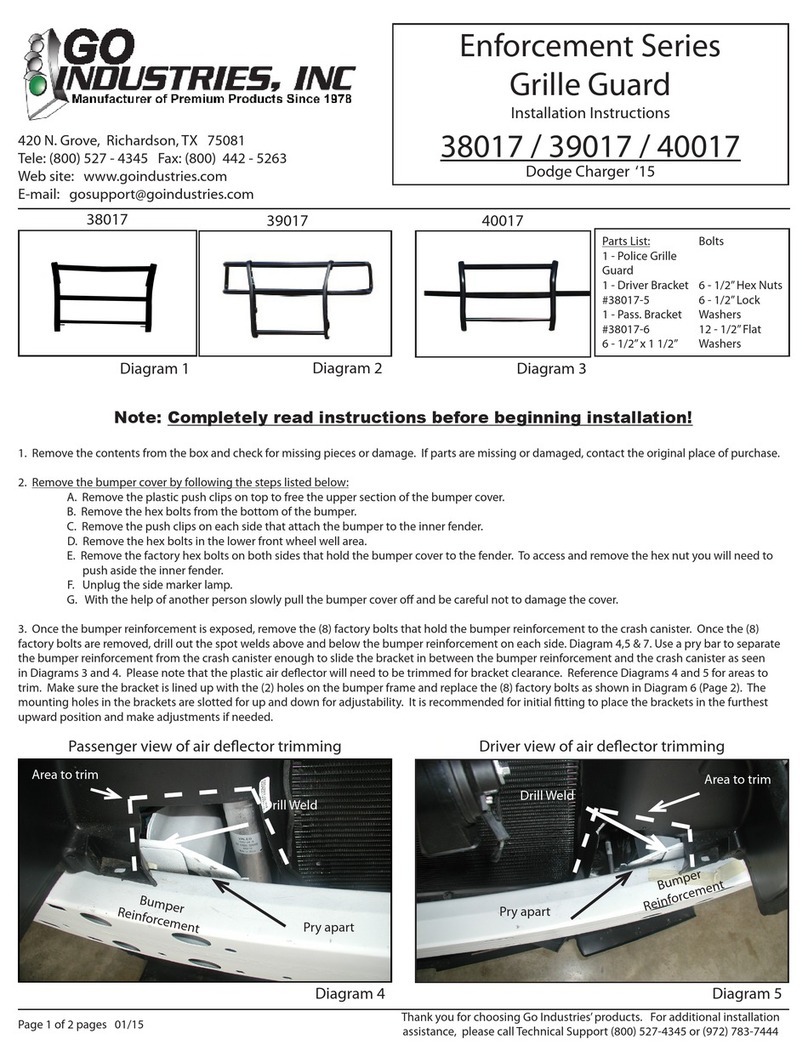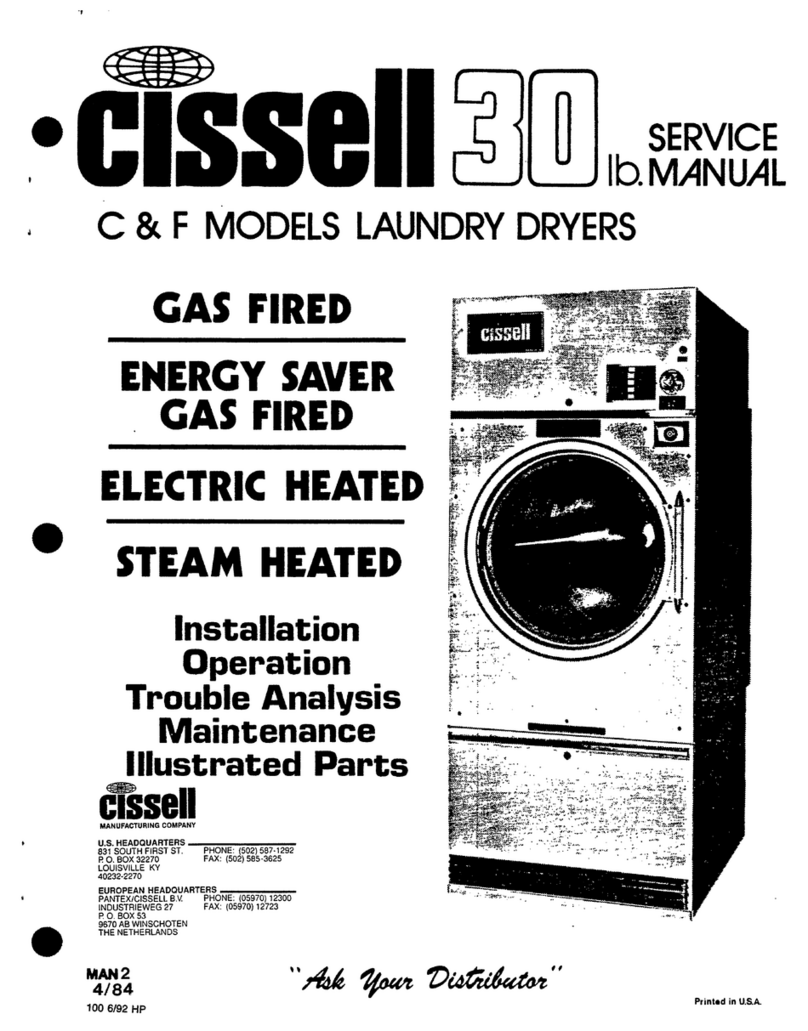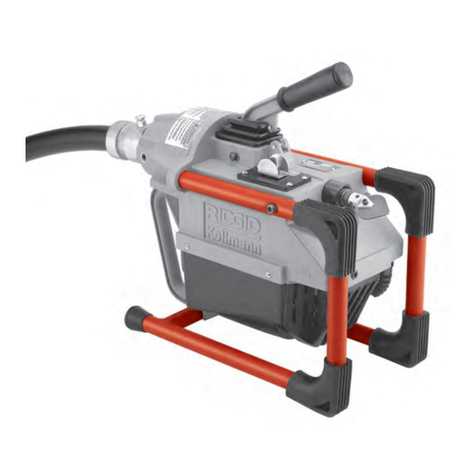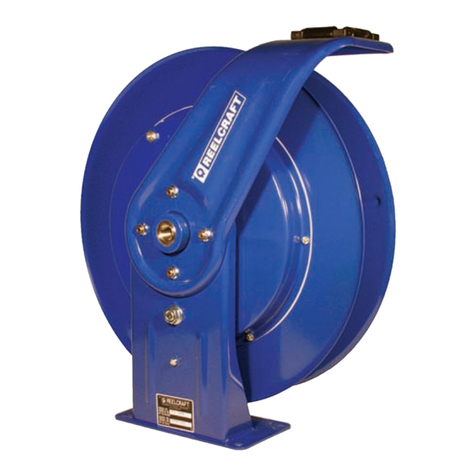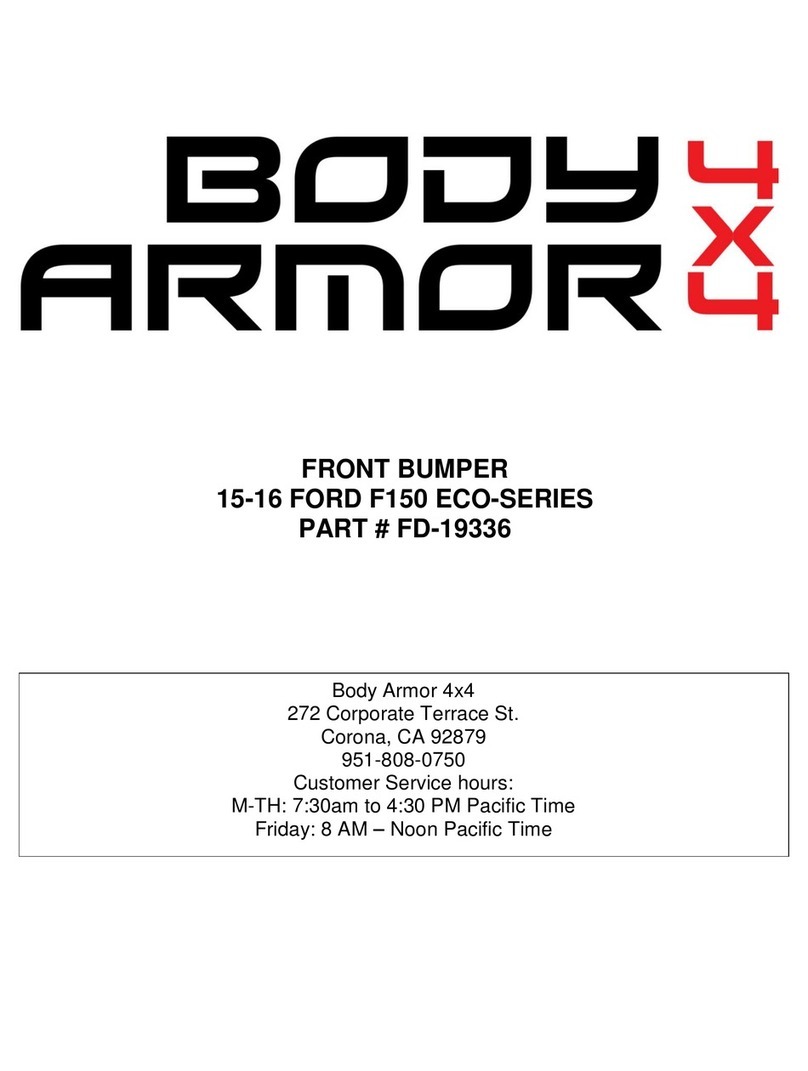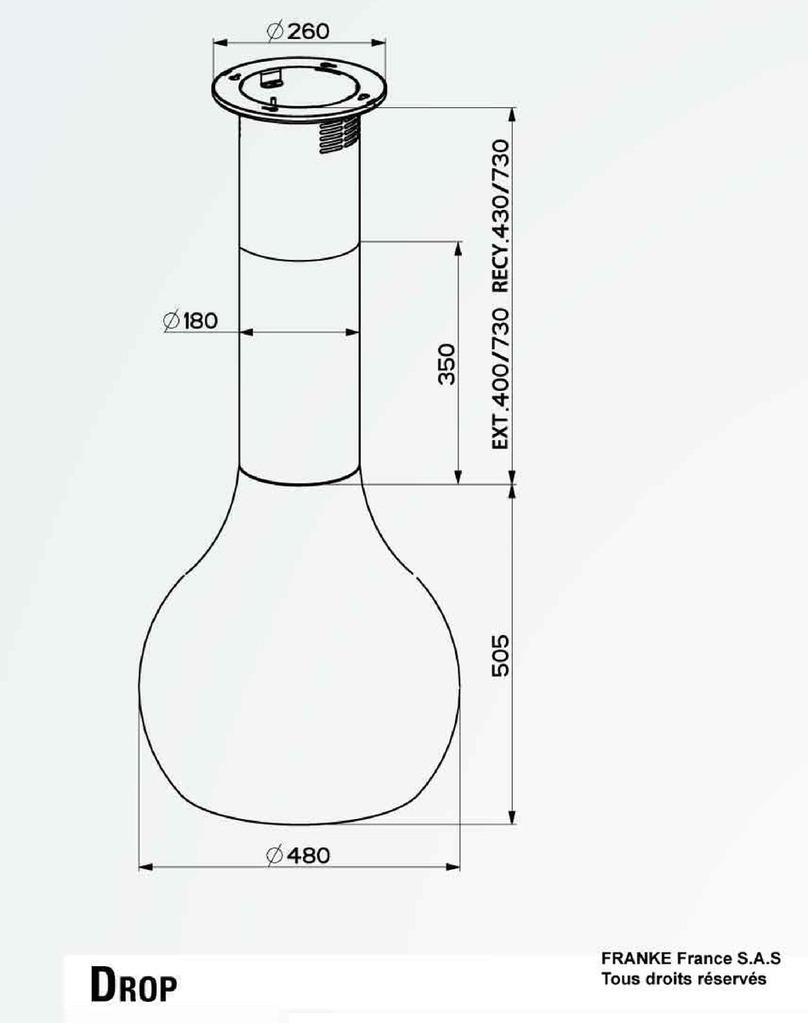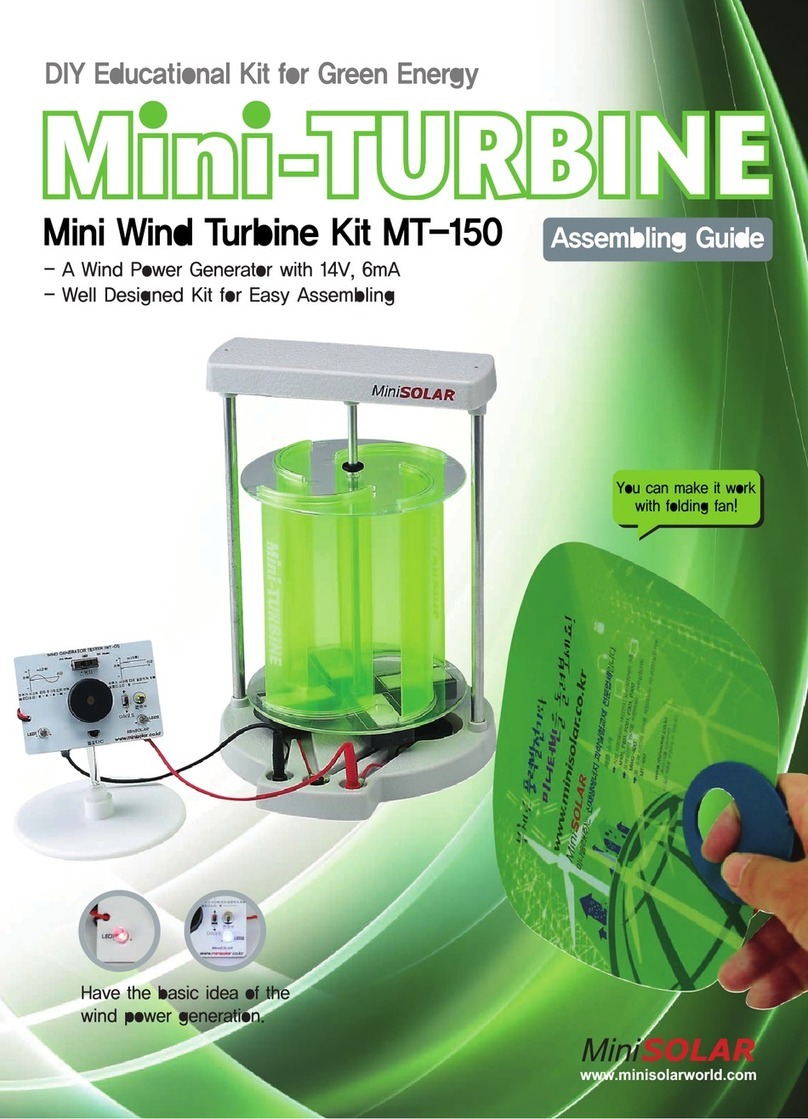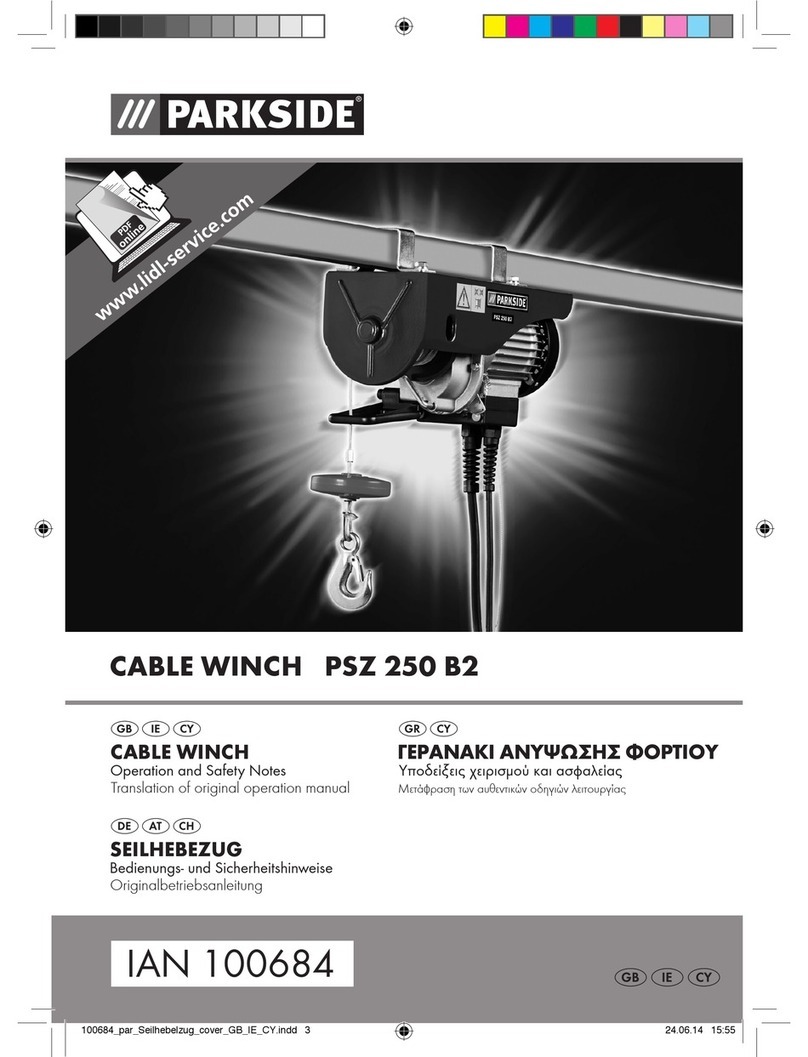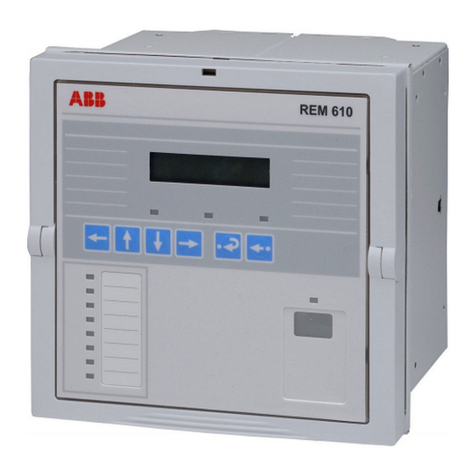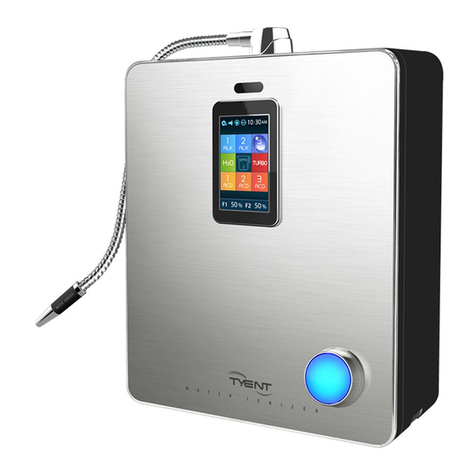3. SUPERGLUE VS. “ON TAPE”
INSTALLATION
The pickups can be installed either with superglue
gel directly to the bridge plate or with our special
foil-mount technique. Of course there is a difference
in tone whether the foil is used or not.
Pickups glued directly to the wood will put out about
20% more volume, more bass, and more midrange.
The overall tone quality using the direct installation
is probably best described as providing
“authoritative midrange” and very fundamental bass
response. Finger-stylists will like that. It is absolutely
great for flat-picked solos: every single tone will
sound very warm and “thick”.
On the other hand, an installation using the foil
provides a somewhat finer tone with less individual
tone pronunciation, which may be desired by
strummers. It sounds slightly brighter, with less
midrange and with a somewhat lower bass response.
The overall sound is still natural and the output will
still be excellent, much higher than most
competitors’ passive pickups. The signal can easily
be boosted with one of our preamps if desired.
You will find 2 silver strips (1" x 4") with adhesive
backing in the package. These 2-mm thin, super-
sturdy foil strips are made of a high-tech material,
which is specially suited for acoustic transmission. If
you attach a fitting strip to the bridge-plate and then
superglue the pickups to the foil, you can simply
remove the pickups by pulling off the foil.
If you are in doubt about which installation method to
choose, we recommend using the foil mount at first.
You may like it just fine this way. If you later decide
to give the permanent installation a try, you can
carefully remove and re-glue the pickups directly.
Please follow paragraph “Removal of Pickups”
below.
4. PREPARATION (FOR ALL GUITARS)
1. If you have a pin-less bridge, remove the stings.
If you have a pin bridge, loosen the strings and
clamp a capo on the 10th fret. Pull out the string
pins and the ball ends of the strings. The capo
will hold the strings on neck and tuners. This way
you don’t have to remove the strings entirely and
can quickly re-install them after the pickup is
installed.
2. Place the guitar on a table (use a blanket
underneath) so you can comfortably put your
hand into the sound hole and feel the inside
structures underneath the bridge with your
fingers.
3. Locate the X-bracing and the bridge plate. The
size of the bridge plate and the bracing of your
guitar might be different to the bracing structure
shown in the pictures in this manual.
4. Use a handheld mirror (one which fits into the
sound hole) and a flashlight to examine the
bridge plate area. Make sure that the bridge
plate is level, clean and smooth.
5. Drill or widen the endpin hole to ½” (12mm). In
my opinion, this is the most difficult part of the
installation. First you have to determine what
kind of endpin is currently installed in your
guitar. It may be a simple type, which is held in
place by a single screw. Or it may be a standard
¼” tapered endpin, either press-fit or glued in.
The glued in type is the most difficult one to deal
with and we recommend looking for professional
assistance.
6. Tape the endpin-hole with a piece of duct tape to
protect the surrounding area of your guitar.
7. Single screw type: We recommend using a ½”
(12mm) FORSTNER drill bit to drill out the screw
hole. This one makes the nicest cut and is most
gentle to your guitar. You also may use a step-
by-step method to widen the hole to ½” (12mm).
Use several ascending size drill bits in
succession. Make sure to use self-centering drill
bits (used for metalwork) not the single-pointed
drills for wood!
8. Standard ¼taper press fit endpin: Pull out the
endpin and use several ascending size drill bits
in succession to widen the hole step by step.
Make sure to use self-centering drill bits (used for
metalwork) not the single-pointed drills for wood!
5. REMOVABLE INSTALLATION
1. Clean the bridge-plate. We recommend to either
use fine sandpaper or to scrape the surface with
a razor blade to smoothen it. Then clean it with
acetone.
2. Following the diagrams below, stick one foil strip
to the bridge-plate. Make sure that the edge of
the foil is lining up with the edges of the
pinholes!
3. Press the foil flat against the bridge-plate and
around the edges of the left and right braces.
